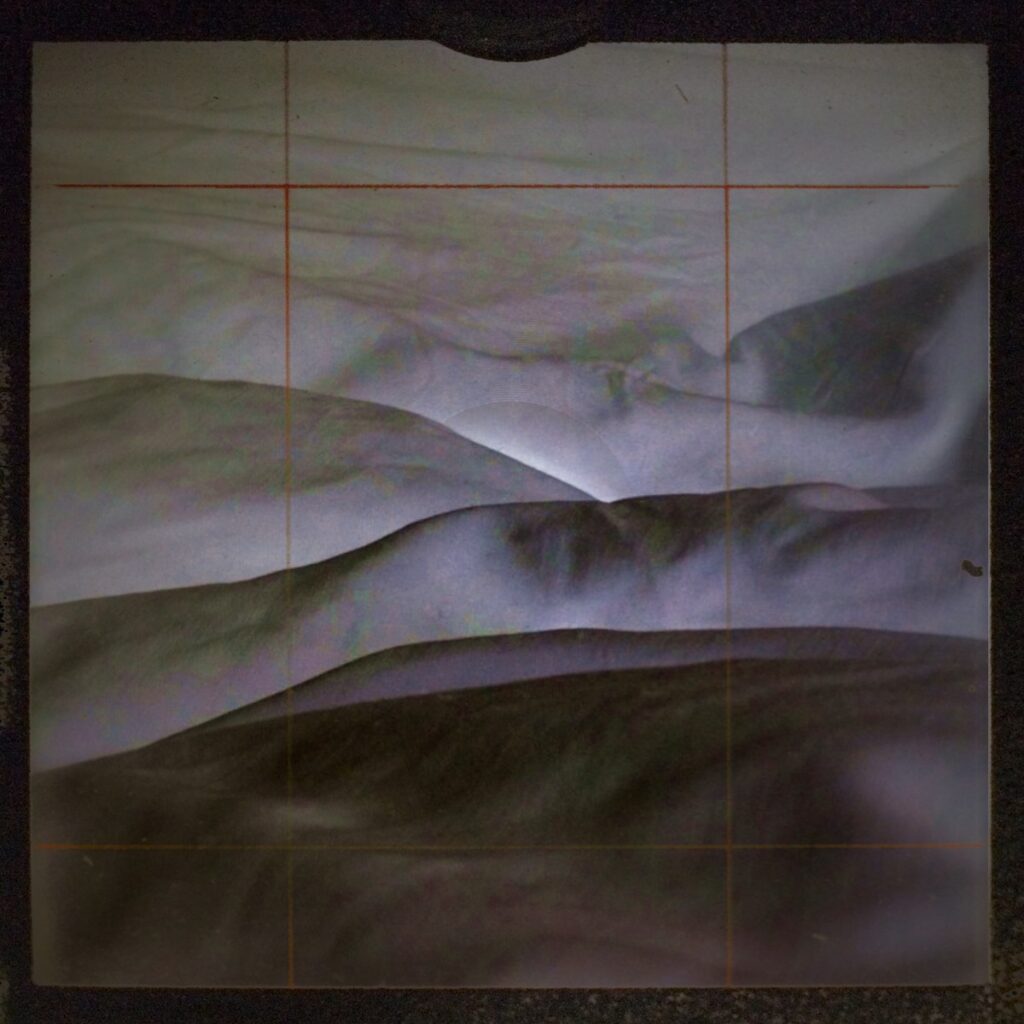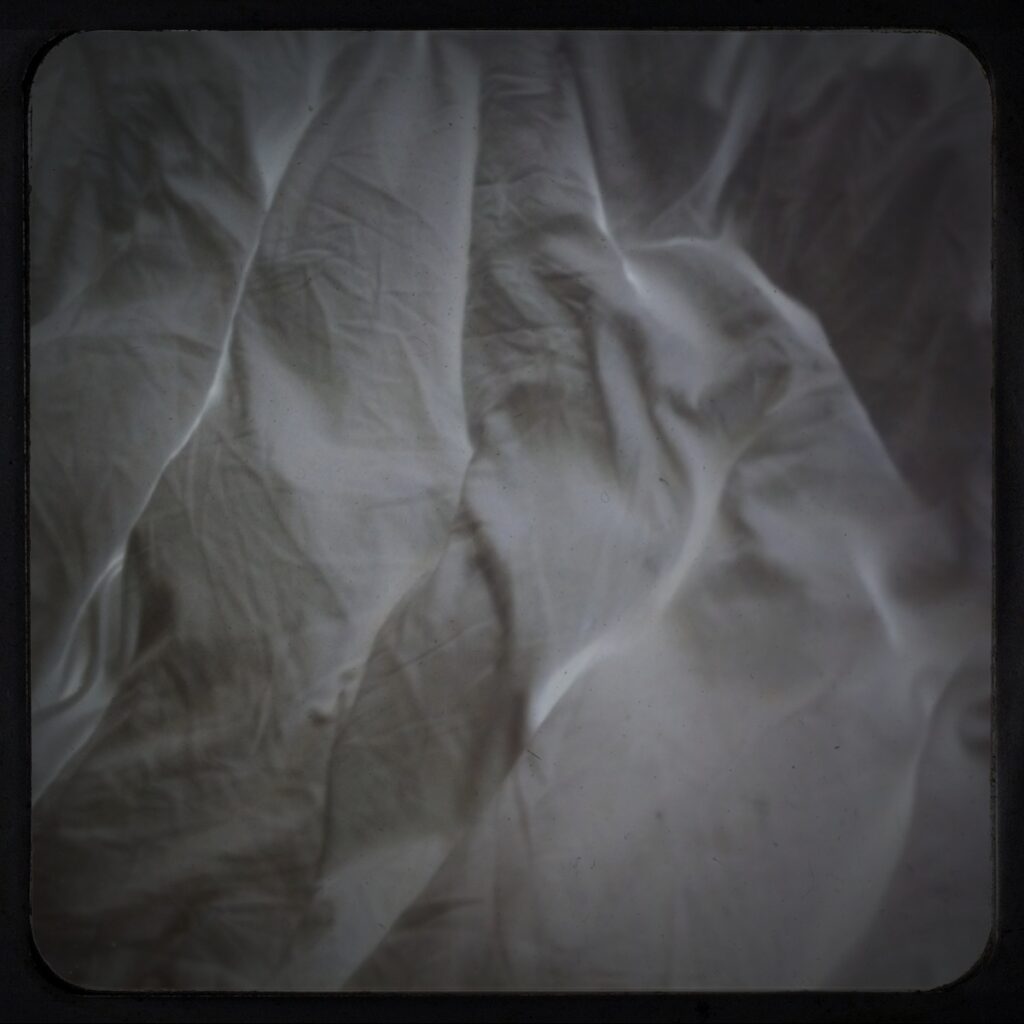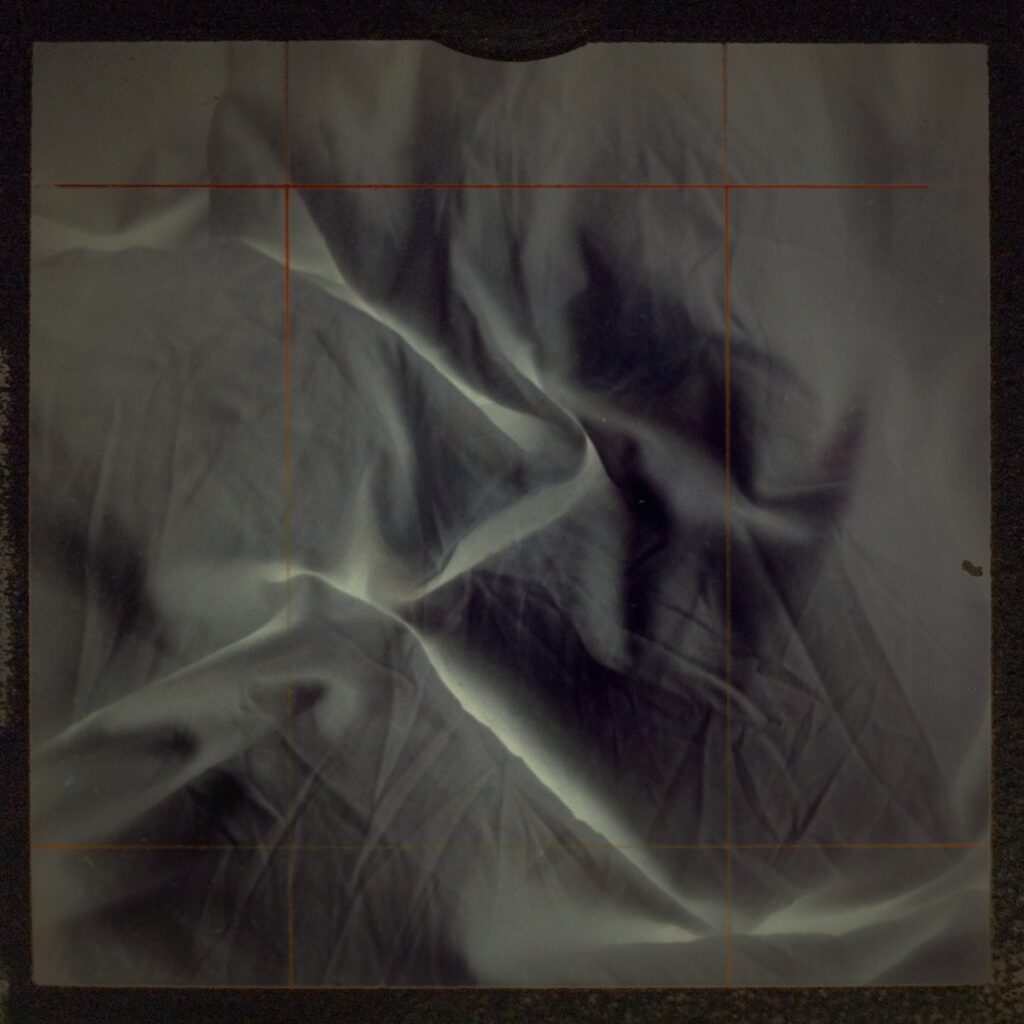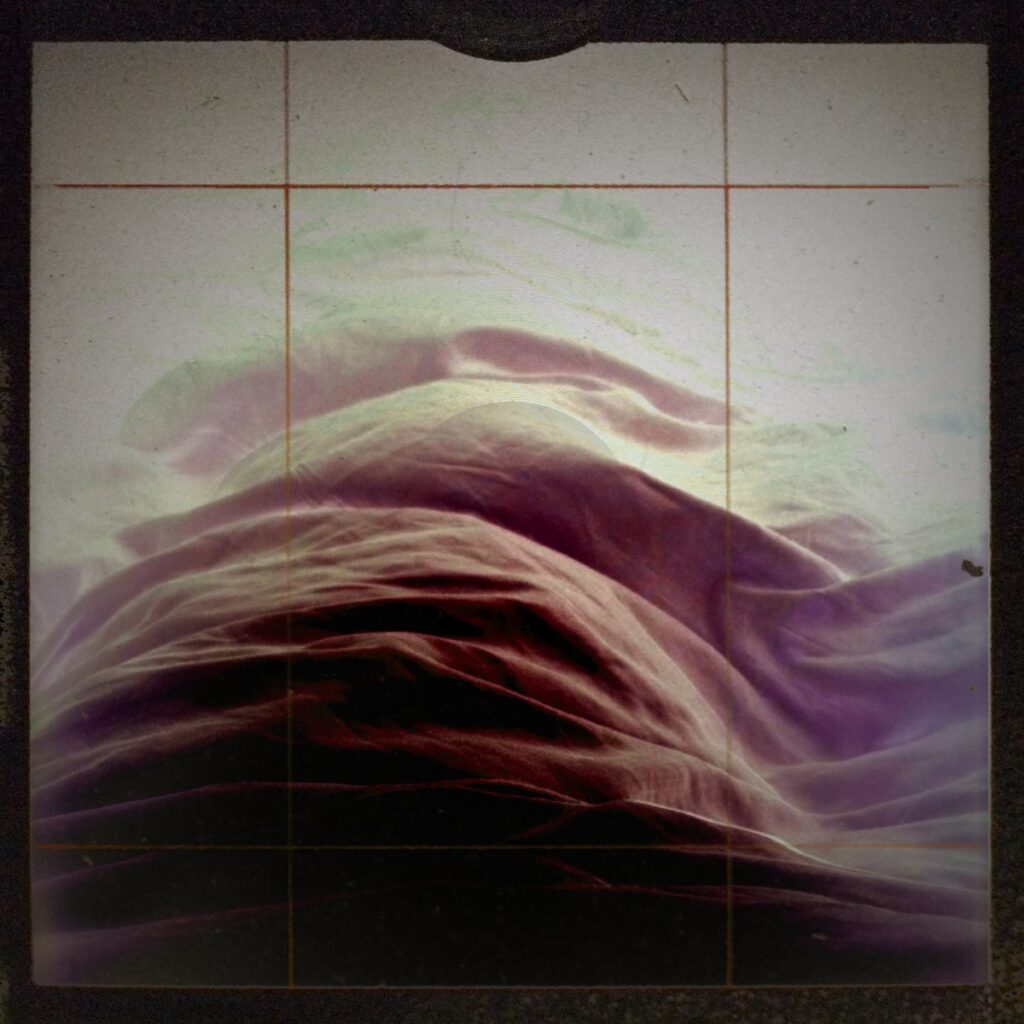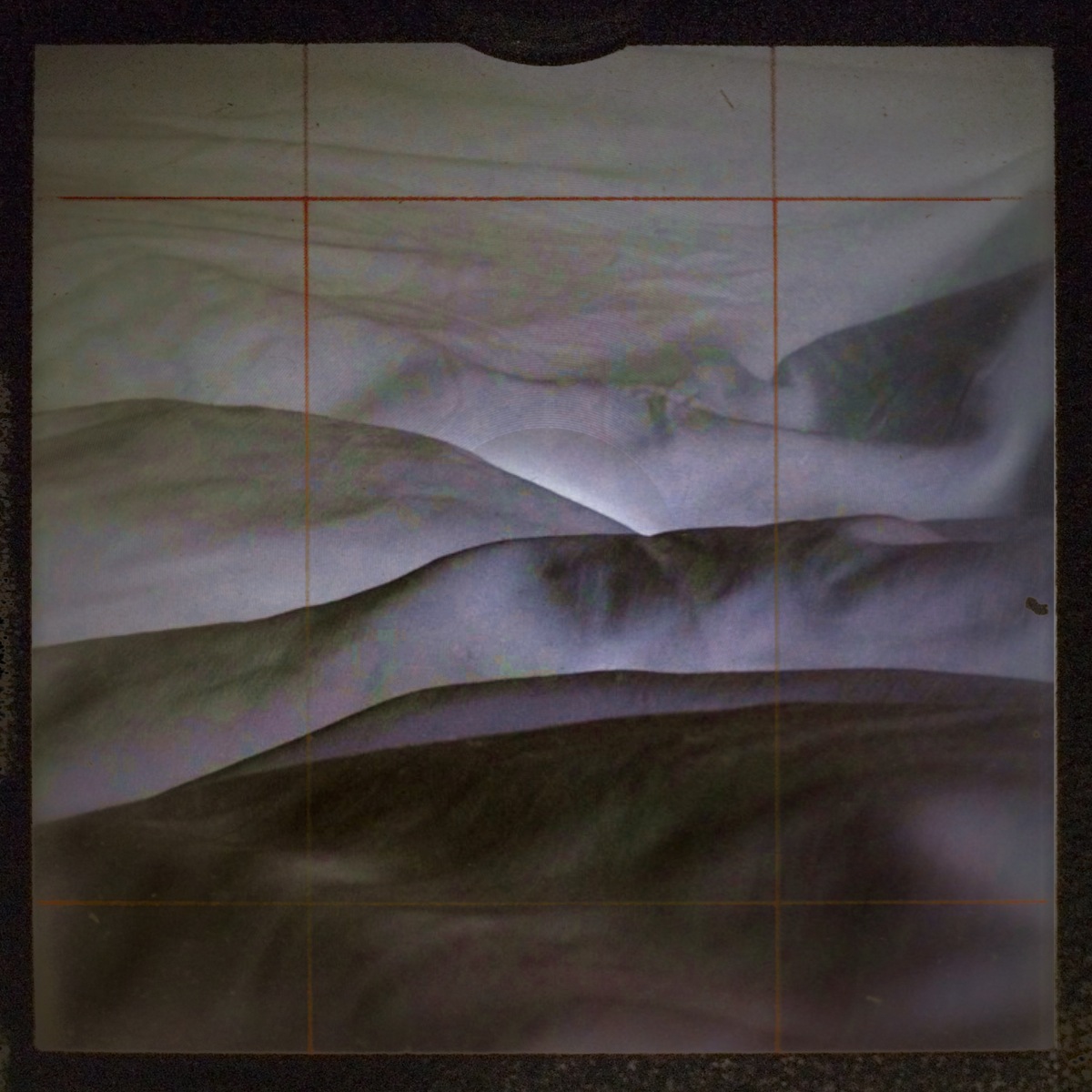1. Visual Analysis
This series invites the viewer to explore the textures, forms, and abstractions of everyday fabric through the lens of a dreamlike landscape.
- Composition: Each image features folds, creases, and undulations of fabric arranged to mimic natural landforms—hills, valleys, and ridges. The photographer isolates sections of the cloth, creating an illusion of vast geography in a confined frame.
- Light: Soft directional lighting enhances the contrast between shadows and highlights, transforming ordinary folds into dramatic, mountainous landscapes. The light in some frames (like Image 5) introduces a sepia tone, evoking the warm glow of desert dunes.
- Color: The images alternate between monochrome, muted grays, and earthy tones. Subtle shifts in color temperature contribute to the mood: a cool, ethereal calm in the gray images and a rich, organic warmth in the sepia-toned pieces.
- Texture: The fabric’s soft wrinkles and organic curves resemble wind-sculpted dunes or eroded hillsides, offering a tactile quality that contrasts the smooth, glowing light.
- Perspective: By framing the fabric closely and avoiding any obvious scale indicators, the photographer plays with perception, inviting viewers to interpret the cloth as expansive landscapes.
2. Philosophical Reflection
The series asks a quiet question: how much of the world do we create in our minds? In the folds of fabric, we find echoes of deserts, mountains, and misty horizons—spaces that are both intimate and infinite.
- The Illusion of Scale: The geography we see is imagined. Here, the mundane—a blanket or sheet—becomes a boundless landscape. This duality reflects our ability to project meaning onto the simplest of things.
- Wabi-Sabi and Imperfection: The creases and wrinkles, instead of being imperfections, become the lifeblood of the composition. They celebrate the Zen notion of Wabi-sabi: beauty in transience, imperfection, and incompleteness.
- A Meditation on Stillness: These images evoke quietude. In the soft folds and shadows, there is a stillness that invites contemplation. The fabric seems to breathe, holding stories of rest, dreams, and gentle movement.
3. Practical Photography Insights
This series is a masterclass in abstraction, light, and creative vision:
- Transform the Ordinary: Everyday items like bedsheets or curtains can become surreal landscapes when photographed creatively. Look for forms, shadows, and textures that mimic nature.
- Play with Light: Directional light (from a window or lamp) creates depth and drama. Experiment with angles to emphasize the sculptural qualities of your subject.
- Isolate the Subject: By framing closely and excluding distractions, the photographer allows the viewer to focus entirely on texture and form.
- Use Color Thoughtfully: Monochrome enhances texture and mood, while warm tones evoke emotional resonance. Post-processing can amplify the illusion of scale and geography.
Pro Tip: Challenge your perspective—see the potential for grandeur in small, overlooked spaces.
4. Reflections
In this series, the bed becomes a landscape, the fabric a terrain shaped by light and movement. What do we see when we look closer? The hills and valleys are illusions, yes, but they are no less real for being imagined. Here lies the beauty of abstraction: it allows us to wander, to drift into quiet places of the mind where fabric folds become distant deserts, and shadows stretch like mountains at dawn.
Perhaps these images remind us that art does not always need grand subjects. A sheet, creased and fallen, can be a mountain range. A wrinkle, catching the light, can be the curve of a sand dune. It is not what we look at, but how we see it.
In the geography of the bed, the artist invites us to get lost—both in the physical folds of the fabric and in the boundless landscapes of our imagination.
